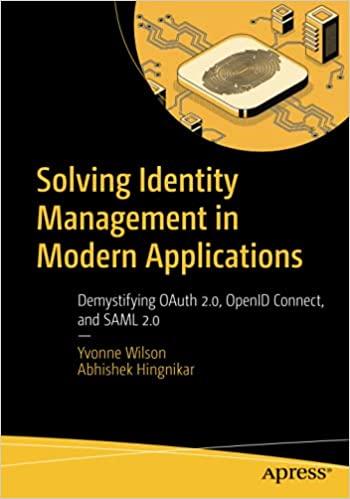


John Thomas, a recent CIS graduate, sat at his desk looking at some of the data sets provided to Silver Jewelry Stores by other businesses owned by the parent company, ONG, Holdings. These data sets provided detailed profiles of customers, complete with names, addresses, phone numbers, and email addresses plus psychographic profiles for those customers who had participated in the subsidiaries' surveys. The data also provided lists of purchases for each customer by type of product, date purchased, how it was paid for, use of the store's credit card (which is now administered by a bank), store pickup or delivery, in store purchases, and internet purchases. Thomas' assignment was to mine these data sets to develop lists of existing and potential customers who could be targeted by Silver Jewelry Stores, as well as other subsidiaries, for marketing specific types of products through different media. The parent company had followed standard statements in their privacy policy statement about what the storage mechanism's use of and sharing of customer data were and a statement about not selling lists to third parties. However, the privacy statement did mention that the company would, froen time to time, use the data provided to market their own products and services to customers. Several custoners had complained to store managers that since opening their account with the stores, there had been a significant increase in the amount of mail from other companies and they were questioning store managers about whether their information was being sold to other companies. Thomas knew, based on the number of "hits" on the company's website and surveys which ask about the company's privacy that had been mailed to them, that most customers did not read the privacy statement and treated it as "junk" mail. The website and the mailed statements all use OGN, Holdings as the originatoe of the statement so it would apply to all subsidiaries' customers. He also knew that while his company did not sell its data to other companies, data was freely shared by all the subsidiaries and therefore any subsidiary could use the data for marketing products and services to other subsidiaries. Thomas wondered about whether or not it was ethical to share data between subsidiaries even though the company's attorncy assured him that they were legally protected. He decided to ask the marketing team to get input from customers about this practice. The marketing team felt this was important enough to hire a research company to do two focus groups on this topic. The two focus groups yielded a lot of insight into the company's operations in general and the privacy policy specifically. Some of the excerpts of the focus group research report are shown below: 1. As expected, most participants had not read the privacy policy statement but were aware the company had one. 2. Most were not aware that Silver Jewelry Stores was a part of the parent company, ONG, Holdings. 3. After copies of the privacy policy were distributed and read by participants, all agreed that the policy seemed fair. 4. However, one of the participants who had had a store credit card for some time stated that since the card was now offered through a major bank and could be used at other stores, he had started getting all sorts of offers in the mail and by emails for a travel club, discounts on mail order/Internet purchases, and mail order/Internet offers in his monthly statement from the bank. 5. Then the discussion got heated as one participant said it looked like they were letting personal data be used by the bank to market products to card holders. Others quickly joined in the discussion and said this was a violation of the privacy statemeat they had just read. 6. The discussion leader stated that Silver Jewelry Stores had not sold their personal data to the bank but that the bank now had access to it because they were processing all their transactions. However, participants continued to discuss how every coenpany wanted all their information and then they were inundated with mail, emails, and even phone calls from companies they had never heard of or done business with in the past. 7. Several participants stated that they were considering cancelling accounts with companies that appeared to follow that practice. Apparently, participants had a lot of anger about such practices and were venting that anger at the focus group discussions. Based on the results of the two focus groups, the research team recommended that the company and its banking partner give all customers an "opt out" of some or all of the solicitations. The bank also had a privacy policy statement that was included in each customer's credit card statement at least once a year. This statement complicated the situation even more because the statement gave a list of why personal data was shared and what customers could prohibit and not prohibit. A partial list is show in Exhibit Cl.l. What this indicates is that in addition to ONG sharing data with all its subsidiaries, the bank that processed Silver Jewelry Stores' credit cards could also share customer data with all its affiliates. The affiliates were not listed in the insert, but customers were given a number to call to "opt out" of direct marketing efforts of nonaffiliates. Thomas wondered if the bank's sharing of information with its affiliates would enable the affiliates to share Silver Jewelry Store customers' data with their own affiliates. This would create a "snowball" effect of data sharing with many other companies who could then use direct marketing to the stores' customer base. The bank's privacy statement was not brought up at the two focused groups interviews and Thomas wondered what participants reactions would be to this added information. XHIBIT C1.1 Partial ist from Privacy tatement 2. Do you think that Thomas agreed with Aristotle that virtue can be taught? Explain your









